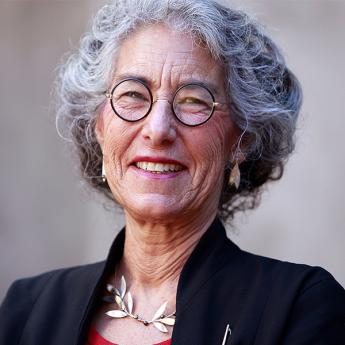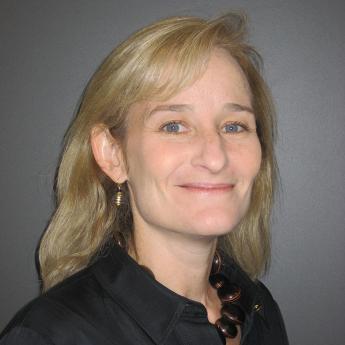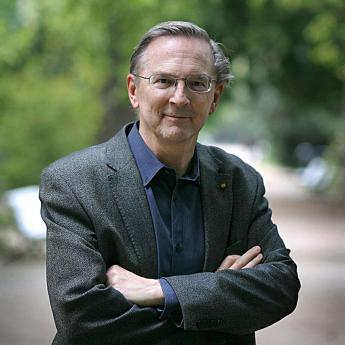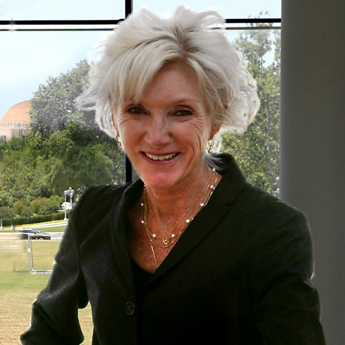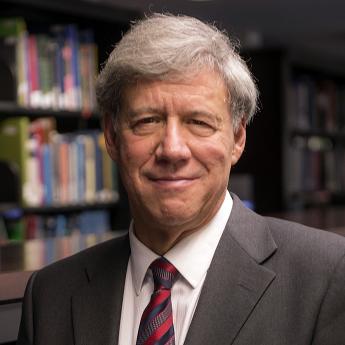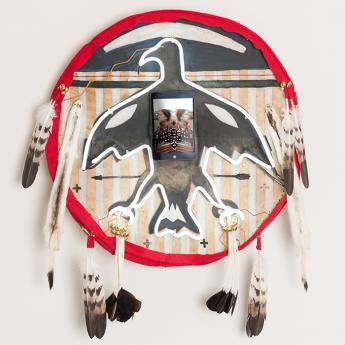Show Notes
Race has played a huge role in the creation of mass homeownership in the United States. Discriminatory housing practices including redlining, exclusionary zoning and whitewashing led to great disparities in home ownership among White and Black homeowners. Despite the passage of the Fair Housing Act in 1968, the damage had been done to communities of color and the rates of Black homeownership.
Mass homeownership actually changed the definition, perception and value of race, according to a new book called The Residential is Racial: A Perceptual History of Mass Homeownership. In it, University of Chicago scholar Adrienne Brown documents the unexplored history of mass homeownership and how it still plays out today. An associate professor in the Department of English and the Department of Race, Diaspora, and Indigeneity, Brown is also the author of The Black Skyscraper: Architecture and the Perception of Race.
Subscribe to Big Brains on Apple Podcasts and Spotify.
(Episode published August 22, 2024)
Subscribe to the Big Brains newsletter.
Please rate and review the Big Brains podcast.
Related:
Transcript:
Paul Rand: It’s impossible to talk about racism and discrimination in this country without talking about another of America’s Most contentious topics, housing.
Tape: Housing discrimination has left a devastating legacy in the United States. The restrictions on people of color from purchasing property have denied entire generations lasting wealth.
Paul Rand: The history of discriminatory practices based on race such as redlining, racial covenants, and whitewashing have created many of the disparities we see today where 74% of white Americans own their homes, while for Blacks, that number drops all the way down to 46%.
Adrienne Brown: Yeah. And then I think the wealth gap driven by who has been allowed to invest in home ownership and whose investment has been subsidized, we are definitely still living in the shocks of the policies and the procedures that were put in place for decades, if not centuries before.
Paul Rand: Thats Adrienne Brown, Associate Professor of Race, Diaspora and Indigeneity in the English department at the University of Chicago and the author of a new book, The Residential Is Racial: A Perceptual History of Mass Homeownership.
Adrienne Brown: And what I’m interested in the book is tying mass home ownership, a story we kind of think of as a modern 20th century home ownership you usually think about in relationship to the New Deal, maybe to the Great Migration, to urbanization, but that the ideas around mass home ownership and the racialization of mass home ownership actually has this much longer history tied to the longer history of the relationship between race and property, going back to the Enlightenment.
Paul Rand: Many of you probably think you’ve heard this story before, but Brown is telling a totally new story, one that’s gone largely unexplored and totally flips the script to understand not only how race shaped housing in America, but how housing also shaped race.
Adrienne Brown: This new idea of how to be white, how to inhabit whiteness changes so much between the early 20th century and the mid-20th century, and home ownership is the engine that really changes how whiteness is thought about, how it’s defined, and how people see and value it. And in my mind, those questions are aesthetic questions. They’re about learning how people see, how people understand what race is and how they come to inhabit those norms of sight, action, performance. And those questions to me are humanistic questions, right? Questions that you have to understand how people lived, saw, and experienced race.
Paul Rand: To get into the minds of the people who shaped this history, Brown looks beyond just historical documents, pulling in all the cultural artifacts to speak to the inner workings of people’s thoughts such as art novels, movies, ads, magazines.
Adrienne Brown: It’s those kinds of places where this idea of feeling and property and race come up across the ownership archive, from writers like Steinbeck to housing administrators who use similar language around feeling and racial capacity, where I’m like, “Oh, feeling is really important to understanding this story.” And it’s not just about maps and data and census records, but understanding the way that feeling becomes so important to how people understand what home ownership is and how it works.
Paul Rand: Welcome to Big Brains, where we translate the biggest ideas and complex discoveries into digestible brain food. big Brains, little bites, from the University of Chicago Podcast Network. I’m your host, Paul Rand. On today’s episode, the unexplored history of mass home ownership and race. The University of Chicago Leadership and Society Initiative guides accomplished executive leaders in transitioning from their long-standing careers into purposeful encore chapters of leadership for society. The initiative is currently accepting candidates for its second cohort of fellows. Your next chapter matters for you and for society. Learn more about this unique fellowship experience at Leadforsociety.uchicago.edu. Well, Adrienne, thank you for joining us. This is the second book that you have written about real estate and race, and I’m wondering how you decided to explore this by connecting the two.
Adrienne Brown: That’s a really fantastic question. My interest in these questions goes back to my own upbringing. I grew up in suburban Maryland and I lived in an apartment complex across the street from this suburban neighborhood and had a sense growing up that that was meaningful. The fact that my family didn’t own and the fact that I was Black, that was something connected there and it meant something and even before I had the words for it, curious in understanding why that is. These ideas have been with me for longer than I would care to say, I’ve been thinking about these ideas, and I think it comes from lived experience and then really developed into an intellectual interest that I’ve pursued now across a couple of books of mine.
Paul Rand: But you actually, as you mentioned, are an English professor. Tie these two together for me and what does coming at it with your background, how does that help you look at this a little bit differently?
Adrienne Brown: So I consider myself a scholar of perception and aesthetics, so I’m interested in how people see the world around them and how it changes over time. In particular, how we see experience and come to know race. I thought a lot about that in my first book On the Skyscraper, thinking about how architecture literally sets the stage for how we see race and how we come to know it. That when you’re in a taller building, your ability to literally see bodies changes, and that must have changed the ways that people thought they knew what race was and how it worked.
Reading really deeply into the literature of home ownership, the record of art and culture is really important to understanding that story of how the perception and experience of race changed as America was becoming a nation of homeowners, as it was becoming a residential nation where people lived in residential neighborhoods, which is a newer phenomenon in the 20th century. And so for me, the fiction and the painting and the poetry that I write about in this book is not like ornament on top of the historical story, it is the evidence we have to learn how people were learning to inhabit race, to see race differently when the home becomes the biggest investment that people are going to make in their lifetime.
Paul Rand: So when did homes become such an important feature of the American dream? It all starts with President Herbert Hoover.
Tape: And I have, but one desire and that is to see my country again on the road to prosperity, which shall be more seen through the lessons of this experience to see the principles and ideals of the American people perpetually.
Paul Rand: Hoover was president during the Great Depression, a time when the idea of owning a home was a distant dream for most Americans. Despite that, this is really the moment the seed of mass home ownership was planted in America, and that seed was watered from the very beginning with racial discrimination.
Adrienne Brown: Hoover was in some ways the smoking gun for a lot of this project. When I kind of came across this speech he gave, I realized, oh, I’m on to something. Hoover gives this 1931 presidential address at what was called the President’s Conference on Home Building and Home Ownership. We’re in the first few years of The Depression, obviously the home market tanks. All property values are taking, and Hoover brings together a number of experts to think about and talk about the problem of home ownership and housing in the U.S. And Hoover had had a long history with housing.
Before that he was a Secretary of Commerce and was the first person in the government to partner with the real estate industry to booster home ownership as a national good. And in this speech, he starts by saying that there is a wide distinction between homes on the one hand and on the other hand, mere housing. And the evidence he uses for that are songs, so he lists Home Sweet Home, My Old Kentucky Home, and The Little Grey Home in the West, and he says that these songs were not written about tenements or apartments, but he says, quote, “They are the expressions of racial longing which find outlet in the living poetry and songs of our people.”
So to me that is the roadmap for this book, A, that Hoover is using all of these songs as evidence to make the claim that there is an innate racial longing for home ownership that the state needs to invest in and subsidize in some way so that there’s already this kind of argument of culture, this evidential use of culture by the president to say, “This is why this should matter to us.” And then B, this idea that home ownership and these songs are expressions of racial longing. So it was really interesting in trying to understand, A, what Hoover met in 1931 by racial longing, and B, where that thinking came from. That a song like Home Sweet Home says something about racial longing for ownership.
Tape: It is in accordance with these principles that we are now in process of establishing a new system of home loan banks, so that through added strength and through cooperation between the building and loan associations and the saving banks and other institutions, we may relax the pressures on forfeiture of homes and procure the release of new resources for the construction of more homes and the employment of more men.
Paul Rand: What do you think he meant by racial longing?
Adrienne Brown: Sure. One thing that I talk about in the book is that the ideas of raised and property are burst around the same time. They’re kind of both becoming integral to the emergence of capitalism, to the growth of the nation state, to colonialism, empire all around the Enlightenment Period. If you look at the writings of the big Enlightenment thinkers, people like John Locke, David Hume, Adam Smith. They’re all grappling with the sense of what is property? Where does it come from? Is it innate? Is it an innate feeling that people have that they want to own? Is it a convention that people learn? And one thing that I became really curious about and wanted to trace in this project was how much theories about property, about ownership have centered on this idea that certain people can feel more deeply for property than for others, that there is this differential capacity for ownership that is the foundation of racialization
X people not only want to own and have the capacity to own, but they have a deep yearning to own and that X people do not, and in fact cannot own the land, are only occupants. Right? They haven’t improved the land, if we’re going to use the language of John Locke, for instance, who says if you’re not improving the land, quote, unquote, “In an active way,” defined by Locke, then you don’t own it, right? Hubert himself was before he became a bureaucrat and a government official, he worked in mines across the world. He was a mine operator and a manager of mining, and he had a lot of experience extracting labor and materials from nations around the world. And in that work, he thought a lot about racial hierarchies and who had a superior work ethic, so he writes lots of tracts about this.
So he’s part of this larger group of people in the late 19th century, in particular in the early 20th century, who are thinking about a certain vision of Anglo-Saxon diaspora in which white capacity for ownership and the management of property becomes the alibi for settler colonialism, for increasing engagements in plunder and imperialism and settler colonialism. And this idea, that feeling is so central to how to understand property comes up with surprising recurrence, at least to me, in the 20th century. I write about John Steinbeck and try to think through the ways his literature is so interested in how the Okies, for instance, in the Grapes of Wrath, how their great feeling for land separates them and makes them a population we should care about.
And in the background, there are lots of Mexican and Japanese and Chinese immigrants who are doing the similar work to the Okies in California, but they don’t have the same in Steinbeck’s imagination because they don’t have the same racial capacity and feeling for property. It matters less, right? And that there’s this kind of mythical tie between whiteness and the yearning for ownership that must be recognized but also encouraged and saved. But the other place he’s getting this is from the National Association of Realtors, which is what we call the organization today, but they have this long history starting as the NAREB in Chicago.
Paul Rand: NAREB stands for the National Association of Real Estate Boards. If you want to understand where many of America’s policies around housing discrimination start, that’s the place to look. That’s after the break. Carry the Two is the show that pulls back the curtain to reveal the mathematical and the statistical gears that turn the world. Co-hosts Sadie Witkowski and Ian Martin bring unique perspectives from the fields of mathematics and statistics to convey how mathematical research drives the world around us, with each episode tackling a different topic. Subscribe to Carry the Two, part of the award-winning University of Chicago podcast network. It’s too simple to say that any one group or organization can be considered the main villains in this history, but the NAREB certainly makes a strong case for that title.
Adrienne Brown: Real estate before the 20th century was kind of thought about as a kind of hustler, speculative industry. In the 20th century, real estate starts to organize, get professionalized. They start to build this national guild to unite regionally and be able to lobby the federal government and state governments and gain massive amounts of power across the 20th century, and Hoover is really tied to this organization starting in the twenties. And so when I started to look at some of their journals and magazines and publications, you find almost word for word the language that Hoover is using. The language around home ownership is sweeter. People with Anglo-Saxon blood are better at it and have a deeper feeling for it. All of this language is in these early journals and writings by real estate agents, land economists who are writing about this as early as 1905, 1988, 1910.
Paul Rand: And these were not just peripheral musings. Part of these comments from the real estate group were written into their code of ethics all the way back into 1924. Isn’t that right?
Adrienne Brown: Absolutely. The 1924 code of ethics is a pretty legendary moment in real estate where the code basically forbids realtors who are going to be affiliated with the association from selling property to African Americans or racial others in predominantly white neighborhoods. It’s an ethical code, it’s not a law. And the question of how residential segregation gets around the law is one that I talk a lot about in the book, but this code becomes binding and it becomes a kind of source of civic pride for many people in the organization, and the ways that Hoover in 1931 as the first president to really embrace home ownership as the kind of foremost symbol and of the American dream. So the home ownership rate starts to drop and the realtors get very nervous. So the idea that starts to emerge is we have to figure out how to get people to invest in their homes.
Before the 20th century, people didn’t really fetishize home ownership. They were interested in owning the means of production if they were farmers. Owning the land meant you own the land in which you were making your crop, so there was a real financial incentive. But as we move into the late 19th century and people are urbanizing, they’re moving to the cities, they’re not working and living on farms, they’re working and living in factories, and they’re working outside of the home to earn a wage outside of the home, owning the home becomes less important.
Additionally, it was really hard to own a home before the invention of the 30-year mortgage. And so the realtors and then increasingly with the state start pushing home ownership as a civic good, as a patriotic good, that this is what makes you a real American. This is what makes you a real man or woman. This is what validates you as a white citizen, right? Going back to this idea that whiteness is tied to the capacity and the desire to own, so if you own your home, you’re really proving that you are this model white American citizen at the center of modern American life.
Paul Rand: They came out with an ad titled His Castle, and you did a nice job of tying all these thoughts together and the meaning behind that ad. Can you explain that to us?
Adrienne Brown: Yeah. So I’ll first just kind of paint the picture of this illustration. So it was in this book called A Home of Your Own and What It Means to You. It was published by the National Association of Real Estate Boards as one of these propaganda pieces that were convincing people and teaching people that home ownership was a value and why it mattered. It looks like a picture book. It’s brightly illustrated, lots of colors everywhere, little captions about all the different ways that home ownership can benefit people spiritually, financially, economically, culturally, etc.
And there’s this one illustration that I talk about in the book and reprint in the book that’s called His Castle: Homeowning Breeds Real Men. And the picture is a white man who is turned away from us and is looking out into the distance, and what he sees in the foreground is a small white child in the yard of a single-family home, kind of cookie cutter, beautiful image of what a single-family home could be. And in the background is this picture of a feudal castle, and so he’s kind of staring at this intergenerational picture of property that begets this new generation. I kind of think about this illustration as really capturing some of that. I also read it in relationship to the Great Gatsby, which I can talk about if you want.
Paul Rand: Well, let’s hit the great Gatsby right quick because I do think it’s quite relevant to this part.
Adrienne Brown: Gatsby is a touchstone for the whole book. It appears in lots of chapters because I think of it as the kind of key document to understanding some of these shifts. So for listeners who it’s been a little while, the Great Gatsby of course is a story of Jay Gatsby, right? This kind of heroic, tragic figure, kind of this huckster and this person who kind of lies their way into whiteness through wealth, but earns his money in a kind of an underhanded way, but is trying to impress these monied, white Anglo-Saxons, especially Daisy, who he’s trying to marry. None of this works out the way that Gatsby thinks. Jay Gatsby actually was James Gatz, which would’ve been a real signal to readers in that time that he wasn’t of Anglo descent, right? He was one of these people on the bubbles of whiteness.
Jay Gatsby, in some ways you can imagine Fitzgerald looking at this image of a man looking at this feudal image of whiteness through the castle and this kind of new, modern single-family home and saying, “Ah, that’s the way that I get into whiteness. That’s the way that I become at the center of the American dream, is I buy this ridiculously big feudal mansion,” which is what he does. But in the 1920s, this doesn’t work out for Jay Gatsby, AKA, James Gatz. Tom Buchanan and his set don’t really believe that Gatsby is actually who he says he is. They are much more interested in where he comes from, who his people are, what his bloodline is. Where he lives doesn’t really prove to them that he’s anybody. They all have these deep suspicions about where he comes from.
His blood trumps his ability to own a home, and from there everything ends tragically. Daisy rejects him, he’s murdered, et cetera. So that is a really important story for me because in the 1920s, home ownership does not make Jay Gatsby white. Everyone kind of wants a different understanding of his race to prove that he’s white, that he doesn’t have. Jay Gatsby could not be considered white because his home didn’t help him get there. The shift that happens by the mid-century is that you have lots of people moving to the suburbs from other places, right? These new developments like Levittown spring up out of nowhere.
Tape: And this is Levittown. Here you can own your own home complete with its own refrigerator, television set, and clothes dryer. You can raise your children far from the city’s dirt, crowding, and crime in comfort and safety.
Adrienne Brown: And lots of people moved to these places. No one knows who anyone’s great-grandfather is. No one has evidence of where people come from. This idea that someone would knock on your door and try to figure out who your great-great-grandfather was by 1950 is a much more ludicrous idea because the definition of whiteness changes in that period. It’s less about your bloodline, where you come from. It’s more about your ability to look the part and to invest in whiteness in a space. So this idea that home owning could actually make real men or this idea that home ownership actually could stabilize your racial identity and make those who are on the bubble of whiteness.
People like Italians, Slavs, the Irish who are on the bubble of whiteness, if you invest and buy your home and invest in the mechanisms of racial exclusivity that come with home ownership, you could move from the bubble of whiteness to the center of whiteness. Whiteness actually changes with home ownership. It’s not just that home ownership is responding to race, but home ownership is actually changing the way that race works, who is categorized as what race? And think about this illustration as really capturing some of that.
Paul Rand: You make a point that during this period, you said that something else is happening at the same time, and that the term of Blackness starts becoming associated with not wealth, but with illiquidity.
Adrienne Brown: Yeah. So I think about illiquidity in relation to whiteness becoming an amenity. The scale of the neighborhood becomes much more important to one’s economic and racial identity, when you buy a house in a neighborhood and you have invested in keeping up the value of that home and the value of that home is tied to maintaining the amenity of whiteness throughout the whole neighborhood. On the other side of that, Blackness becomes illiquid. Meaning if a Black family moves into a white neighborhood, immediately that property is going to go down. That’s not always true, but this was the myth of how property worked.
So this idea that Blackness is this inherently creates illiquidity as something that is owned becomes, this is an understatement, but a really toxic idea that in some ways requires Black elimination, right? Blackness has to be excluded entirely from this market scene for neighborhoods to work in the ways that the FHA imagine them to work. These things become ideas and philosophies and theories that then become treated as truisms of the free market, and then people could just say, “Well, that’s what the market says. I’m not guilty of racism, blame the market,” but the market is just our own perceptions and values.
Paul Rand: You wrap the book up and you talk about one of the ways that some progress is attempted to be made on some of these challenges, and in 1968 something comes up called the Fair Housing Act. Talk to us about that Fair Housing Act and what, if anything, you think it helped accomplish.
Adrienne Brown: Yeah, absolutely. So the book largely ends with the Fair Housing Act, not because I think of it as the kind of celebratory end of housing discrimination, but one more failure in the attempt to address it. So the Fair Housing Act, this really ties back to King.
Tape: Good evening, Dr. Martin Luther King, the apostle of nonviolence in the Civil Rights Movement has been shot to death in Memphis Tennessee,
Adrienne Brown: And all of these riots happened across urban spaces in the U.S.
Audio: A great Negro leader was dead, and there was sorrow and despair over the burning and looting in the streets.
Adrienne Brown: And this brings Congress to the table to say, “Okay, we got to do something around housing.” What King did not accomplish in life, his death actually helped to instigate Johnson signing the Fair Housing Act in 1968.
Audio: Now with this bill, the voice of Justice speaks again. It proclaims that fair housing for all human beings who live in this country is now a part of the American way of life.
Adrienne Brown: Which made it illegal to discriminate against renting and selling on the grounds of race.
Audio: I do not exaggerate when I say that the proudest moments of my presidency have been times such as this when I have signed into law the promises of a century.
Adrienne Brown: So the Fair Housing Act happens, its passed. It’s a huge landmark legislation, but the problem is that it’s very hard, depending on the administration that is in power at that time, to prove that someone is being discriminated against the housing market. Right?
Paul Rand: Mm-hmm.
Adrienne Brown: So if a landlord says no to a Black person and says, “You can’t rent this space,” how do you prove that that is discriminatory? How do you prove that that is because they are Black? The evidence you have to provide, proof of racism has historically been very difficult to meet. It is legislation that has had impact, but has it ended the racial wealth gap? Has an ended discrimination on the housing market. Has it ended the fact that Black property is often valued and appraised at lower rates than white property? No.
None of that was ended by the Fair Housing Act, and in fact, today the gap between the Black home ownership rate and the white home ownership rate is greater than it was in 1968. In some ways, things have not changed that much. That was really interesting to me as the end point. Again, I wanted to be very clear in the book that I’m not celebrating the Fair Housing Act as the end of Discrimination and solving these problems around race and property, but it is one moment that we have to think about that, try to end it, but in some ways it kind of speaks to the limits of the law to address these questions of affect, feeling, perception, desire that we started talking about.
Tape: I shall never forget that is more than 100 years ago when Abraham Lincoln Issued the Emancipation Proclamation, but it was a proclamation. It was not a fact.
Adrienne Brown: The laws may be not enough to fix all of these things. Maybe you need a bigger structural upheaval to actually address something that’s so baked in at this point to how people think, live, understand, and invest. So that’s where I end in the book.
Paul Rand: Where are we today? Let’s talk about if we are looking 20 years out and now we’re going to be reporting on this period, if you did an update to this book in 20 years, how do you think we would characterize the period that we’re in?
Adrienne Brown: That’s a really good question. In some ways, I think we haven’t moved very far. I think we are still in this moment where property and home ownership is still so important to how people think about race, value it, understand it, see it.
Tape: Owning a home often defines the American dream for so many, but an ABC news investigation in partnership with our own stations looked into a recent mortgage lending data nationwide and found gaping disparities based on race.
Adrienne Brown: In some ways you can’t understand. It’s hard to think for people to think about racial categories outside of residential categories, and to me that is a testament to the fact that we are very much still in the moment that the 20th century birthed around property.
Tape: Around property. It’s a part of American real estate that is immoral and racist. It’s called whitewashing. It’s a process where African Americans may get a higher value on their property when they remove themselves entirely from the selling process.
Adrienne Brown: It’s hard to imagine things really changing without more drastic measures in terms of how we think about value the single-family home. There’s been lots of reporting about all the ways that our tax code props up single-family home owners at the expense of lots of different ways of dwelling and occupying space. There are lots of things we could be doing to think differently about supporting people in multiple ways of dwelling that isn’t just a single-family home. But if you look at the trajectory of public housing, fewer and fewer, less and less public housing, right? It seems like we’re really far from the set of solutions that we had even in the early 20th century. In some ways, we’ve moved backwards when we think about the range of solutions that were on the table even in 1920 or 1930, where this idea that public housing was going to be the way we were going to get out of a housing crisis, rather than subsidizing single-family homes.
Tape: Unlike other social safety net programs that continue to expand, federal housing assistance has shrunk to its lowest level in nearly 25 years, even as homelessness and rental prices have hit historic highs. Today, only one in four households eligible to receive federal housing assistance actually does.
Adrienne Brown: So I’m not so optimistic about the future. What I am interested in though, and this will maybe be an optimistic coda, is that I think this idea of the American dream, that home ownership is going to be the thing that’s going to propel people into wealth, I think people are more and more skeptical of that idea.
Paul Rand: I think you’re right.
Adrienne Brown: And that’s really interesting to me. Even if you look at contemporary fiction, so much of fiction from the last 20 years is not about the kind of travails of the single-family homeowner. It’s about refugee camps, it’s about reservations, it’s about different ways of dwelling that I think suggests that people are interested in thinking about other ways and other imaginaries of being housed and occupying space outside of this narrow way of thinking about being a good American citizen that was built around home ownership, and that’s where I think things might start to shift. If we can track the imaginary, that tells us something about maybe where people’s feelings, values, and attitudes are shifting. So to me, that’s a really interesting trend point that I don’t know what it will beget, but I imagine it might beget a different way of imagining how people can live successfully, healthily, with great results that aren’t tied to just home ownership itself.
Episode List
The Ethics of COVID-19 Vaccine Distribution, with Laurie Zoloth (Ep. 63)
Scholar discusses religion, personal freedom, challenge trials and our duty to one another
Doomsday Clock’s ‘historic wake-up call,’ with Rachel Bronson (Ep. 62)
CEO of the Bulletin of the Atomic Scientists discusses threats of COVID-19, ‘infodemic’
Unraveling the Mystery of Life’s Origins on Earth, with Jack Szostak (Ep. 61)
Harvard geneticist and Nobel laureate explores how we got here—and whether we’re alone in the universe
The Urgent Need to Reinvest in American Research, with Barbara Snyder (Ep. 60)
AAU president discusses how more federal funding can secure American innovation
How Alternate Reality Games Are Changing The Real World with Patrick Jagoda and Kristen Schilt (Ep. 59)
UChicago scholars design ARGs to address issues ranging from climate change to public health
What Remains Unanswered After The 2020 Election, with William Howell and Luigi Zingales (Ep. 58)
UChicago economist and political scientist discuss the polls, what lies ahead for Biden and the country post-Trump
When Governments Share Their Secrets—And When They Don't, with Austin Carson (Ep. 57)
Scholar discusses the political theater of foreign policy—and the case for declassifying intelligence
How We Can Fix a Fractured Supreme Court, with Geoffrey Stone (Ep. 56)
Legal scholar examines how nomination of Amy Coney Barrett could tip an increasingly politicized bench
Correcting History: Native Americans Tell Their Own Stories (Ep. 55)
How scholars helped a Chicago museum rethink its representation of Indigenous peoples
The Future of Voting And The 2020 Election, with Assoc. Prof. Anthony Fowler (Ep. 54)
A leading political scholar discusses voting by mail, mobile voting and why he thinks it should be illegal not to vote.


